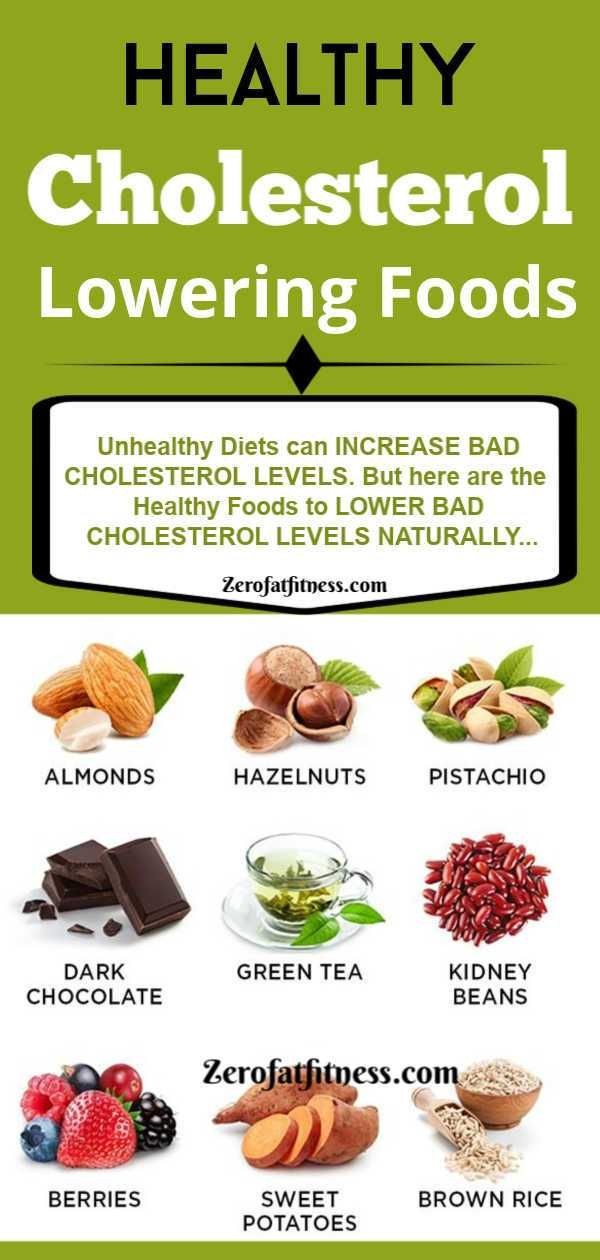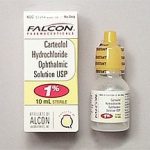
Contents
- 1 Cholesterol Management: Lower, Treat, and Prevent High Cholesterol
- 1.0.1 Types of cholesterol: HDL vs. LDL vs. Triglycerides
- 1.0.2 Cholesterol levels: What’s normal and what’s high?
- 1.0.3 The impact of high cholesterol on health
- 1.0.4 Which foods can help lower cholesterol?
- 1.0.5 What other lifestyle interventions help lower cholesterol?
- 1.0.6 What medications are available to treat high cholesterol?
- 1.0.7 From
Cholesterol Management: Lower, Treat, and Prevent High Cholesterol
Cholesterol is a chemical compound that the body requires as a building block for cell membranes and for hormones like estrogen and testosterone. The liver produces about 80% of the body’s cholesterol and the rest comes from dietary sources like meat, poultry, eggs, fish, and dairy products. Foods derived from plants contain no cholesterol.
Diet and genetics both play a factor in a person’s cholesterol levels. There may be a genetic predisposition for familial hypercholesterolemia (hyper=more = cholesterol + emia=blood) where the number of liver receptor cells is low and cholesterol levels rise causing the potential for atherosclerotic heart disease at a younger age.
Cholesterol content in the bloodstream is regulated by the liver. After a meal, cholesterol in the diet is absorbed from the small intestine and metabolized and stored in the liver. As the body requires cholesterol, it may be secreted by the liver.
When too much cholesterol is present in the body, it can build up in deposits called plaque along the inside walls of arteries, causing them to narrow.
Types of cholesterol: HDL vs. LDL vs. Triglycerides
Cholesterol does not travel freely through the bloodstream. Instead, it is attached or carried by lipoproteins (lipo = fat) in the blood. There are three types of lipoproteins that are categorized based on how much protein there is in relation to the amount of cholesterol.
- Low-density lipoproteins (LDL) contain a higher ratio of cholesterol to protein and are thought of as the “bad” cholesterol. Elevated levels of LDL lipoprotein increase the risk of heart disease, stroke, and peripheral artery disease, by helping form cholesterol plaque along the inside of artery walls. Over time, as plaque buildup (plaque deposits) increases, the artery narrows (atherosclerosis), and blood flow decreases. If the plaque ruptures, it can cause a blood clot to form that prevents any blood flow. This clot is the cause of a heart attack or myocardial infarction if the clot occurs in one of the coronary arteries in the heart.
- High-density lipoproteins (HDL) are made up of a higher level of protein and a lower level of cholesterol. These tend to be thought of as “good” cholesterol. The higher the HDL to LDL ratio, the better it is for the individual because such ratios can potentially be protective against heart disease, stroke, and peripheral artery disease.
- Very low-density lipoproteins (VLDL) contain even less protein than LDL. VLDL like LDL has been associated with plaque deposits.
- Triglycerides (a type of fat) may increase cholesterol-containing plaques if levels of LDL are high and HDL is low.
Total cholesterol score is the sum of HDL cholesterol, LDL cholesterol, and 20% of triglycerides as determined by a blood test. A high score indicates an increased risk of developing cardiovascular disease and/or strokes.
QUESTION
Cholesterol levels: What’s normal and what’s high?
Blood tests are required to measure total cholesterol and lipoproteins. For a complete lipoprotein analysis, the patient should be fasting for at least 12 hours.
The National Cholesterol Education Program endorsed by the American Heart Association suggests the following risk guidelines for levels of total cholesterol, HDL, and LDL:
| < 200 | Desirable |
| 200 to 239 | Borderline high |
| > 240 | High |
| < 40 | Low |
| > 60 | High |
| < 100 | Optimal |
| 100 to 129 | Near-Optimal |
| 130 to 159 | Borderline high |
| 160 to 189 | Near high |
| > 190 | High |
The goal is to have patients modify lifestyles and diets to maintain cholesterol levels within the normal range. It is important to remember that HDL may protect a patient from heart disease and it may be a treatment goal to raise a too low level of HDL.
The impact of high cholesterol on health
Elevated cholesterol levels are one of the risk factors for heart disease, stroke, and peripheral artery disease. The mechanism involving cholesterol in all three diseases is the same; plaque buildup within arteries decreases blood flow affecting the function of the cells and organs that these blood vessels supply.
- Atherosclerotic heart disease or narrowed coronary arteries in the heart can cause the symptoms of angina when the heart muscle is not provided with enough oxygen to function.
- Decreased blood supply to the brain may be due to narrowed small arteries in the brain or because the larger carotid arteries in the neck may become blocked. This can result in a transient ischemic attack (TIA) or stroke.
- Peripheral artery disease describes the gradual narrowing of the arteries that supply the legs. During exercise, if the legs do not get enough blood supply, they can develop pain, called claudication.
- Other arteries in the body may also be affected by plaque buildup causing them to narrow, including the mesenteric arteries to the intestine and the renal arteries to the kidney.
Which foods can help lower cholesterol?
The American Heart Association has developed diet guidelines to help lower cholesterol levels. It may be a challenge to read the nutritional contents on food packaging and on restaurant menus or to do the math, but the benefit will decrease the risk of heart attack and stroke.
- Limit total fat intake to less than 25% to 35% of your total calories each day.
- Limit saturated fat intake to less than 7% of total daily calories.
- Limit trans fat intake to less than 1% of total daily calories.
- The remaining fat should come from sources of monounsaturated and polyunsaturated fats that are found in unsalted nuts and seeds, fish (especially oily fish, such as salmon, trout, and herring, at least twice per week) and vegetable oils.
- Limit cholesterol intake to less than 300 mg per day, for most people. If you have coronary heart disease or your LDL cholesterol level is 100 mg/dL or greater, limit your cholesterol intake to less than 200 milligrams a day.
Some food groups may be beneficial in directly lowering cholesterol levels and include foods with plant sterol additives, high fiber foods like bran, oatmeal, and fruits like apples and pears, fish, nuts, and olive oil. Some of these foods like nuts and fruits are also high in calories, so moderation is always advisable.
By clicking "Submit," I agree to the MedicineNet Terms and Conditions and Privacy Policy. I also agree to receive emails from MedicineNet and I understand that I may opt out of MedicineNet subscriptions at any time.
What other lifestyle interventions help lower cholesterol?
- Weight loss and exercise are shown to decrease total cholesterol while increasing levels of HDL, the good cholesterol.
- Smoking cessation decreases LDL levels plus smoking is a primary risk factor for heart disease and stroke.
- One drink of alcohol a day may help increase HDL levels, but too much alcohol can damage the liver and increase the risk of elevated LDL.
What medications are available to treat high cholesterol?
Four types of drug classes are used to lower cholesterol levels.
- Statins: A variety of statin drugs are on the market including simvastatin (Zocor), atorvastatin (Lipitor), pravastatin (Pravachol), fluvastatin (Lescol), lovastatin (Mevacor), and rosuvastatin (Crestor). These drugs primarily decrease LDL.
- Niacin:Niaspan is the prescription form of niacin and decreases LDL and triglycerides as well as increases HDL.
- Bile acid resins:Cholestyramine (Questran) is a bile acid resin that decreases LDL.
- Fibric acid derivatives: Fibric acid resins lower LDL and include gemfibrozil (Lopid) and fenofibrate (Tricor).
Statins are the only class of cholesterol-lowering drugs that have been directly related to reducing the risk of heart attack or stroke.
Alirocumab (Praluent) and evolocumab (Repatha) are two new medications that are antibodies to a protein, PCSK9, a receptor for LDL. These drugs are indicated for treatment in patients who have had a heart attack or stroke or have familial hypercholesterolemia and are taking maximum therapy, but continue to have high LDL cholesterol levels in their blood.
You and your doctor will discuss what cholesterol medications are right for you based on your current and past medical history, your current health, and any other medications you are taking. These medications often need to be adjusted and monitored for side effects.
While all four medication groups may have a role in controlling cholesterol levels in association with diet, exercise, and smoking cessation, only statins are shown to decrease the risk of a heart attack.
The American Heart Association and the American College of Cardiology recommend that statin therapy may benefit patients with a history of heart attack, those with elevated blood LDL cholesterol levels or type two diabetes, and those with a 10-year risk of heart disease greater than 7.5%. When monitoring how well statin therapy works, the goal for some individuals is no longer to reach a specific blood cholesterol level. Instead, patients with a high risk of heart disease will aim to decrease their cholesterol levels by 50%, and those with a lesser risk will aim to lower their cholesterol levels by 30% to 50%. You need to discuss what levels are best for you to reach with your doctor.
From
Cholesterol Resources
Featured Centers
- What Are the Best PsA Treatments for You?
- Understanding Biologics
- 10 Things People With Depression Wish You Knew

